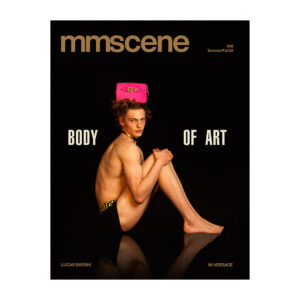
Building a home gym is more than just buying equipment and placing it in a room. It’s about creating a space that motivates you to work out consistently and helps you reach your fitness goals. A well-planned home gym gives you the freedom to exercise whenever you want, skip the commute to a commercial gym, and avoid monthly gym membership fees.
Whether you want to build strength, improve cardio fitness, or maintain overall health, having the right setup makes all the difference. You don’t need to spend a fortune or have a massive space to create an effective workout area – you just need to make smart choices about your equipment and layout.
Keep reading, as this guide will help you build a functional home gym that fits your needs, space, and budget.
Measure Your Available Space
The first step in creating your home gym is to carefully assess the space you have. Begin by taking detailed measurements of your designated workout area, whether it’s a spare room, a corner of the garage, or a basement. Pay special attention to the ceiling height, as you’ll need enough clearance for overhead exercises and taller equipment. Also, consider the type of flooring – ensure it can support the weight of any heavy equipment you plan to use.
Set Your Budget
Your budget will play a crucial role in determining which home gym equipment you can afford. However, there’s no need to feel rushed into purchasing everything at once. A smart approach is to start with essential items and gradually expand your collection. Many successful home gyms begin with just a few key pieces and grow over time as your fitness needs change, and your budget allows for more investment. This way, you can focus on building a home gym on a budget that truly fits your workout style and goals.
Maximize Your Available Space
Maximizing available space requires creative solutions. Smart home gym storage ideas include wall-mounted folding racks that offer full functionality while minimizing permanent floor space commitment. Vertical storage solutions also keep smaller equipment organized and accessible without cluttering your workout area.
If you have a larger collection of workout equipment, consider a mass storage system with adjustable shelving. This can accommodate everything from weight plates to smaller accessories, ensuring your floor remains clear. In tight spaces, prioritize multi-function equipment like adjustable benches that can incline or decline, modular rack systems, and convertible machines. These options give you variety without needing extra room.
Additionally, it’s helpful to zone your gym based on different movement patterns. This organization prevents equipment conflicts during workouts. Make sure to create clear pathways between zones so that all equipment is easily accessible without needing to move other items.

Identify Your Fitness Goals and Training Style
Your fitness goals are the foundation for designing your budget home gym. If you’re focused on strength training, you’ll need different equipment than someone prioritizing cardiovascular fitness. For building muscle, emphasize free weights and resistance machines. Conversely, a balanced approach with both cardio and strength tools works best for general fitness.
If you’re an athlete, choose equipment that mimics the movements of your sport. Cross-training enthusiasts should invest in versatile gear that accommodates various workout styles. Understanding your goals helps prevent unnecessary purchases and ensures every piece of equipment serves a purpose in your fitness journey.
Select Equipment Based on Your Goals
Choosing the right equipment is essential to effectively reach your fitness goals. Here are some tips to help you select the best gear tailored to your objectives, whether you’re focused on strength training, cardio, or functional fitness.
Choose Strength Training Equipment
A strong strength training setup begins with an adjustable weight bench and a quality power rack or squat stand – these form the core of your space. Include an Olympic barbell and a range of weight plates to facilitate progressive overload. Adjustable dumbbells offer a space-saving alternative to a full rack of individual pairs.
Consider adding resistance bands to complement your free weights. They’re excellent for assistance exercises and enhancing mobility. A pull-up bar, whether standalone or mounted, opens up numerous bodyweight exercise options.
Pick Your Cardio Equipment
Your cardio setup should reflect your preferences and available space. A rowing machine provides a full-body workout, while an exercise bike delivers effective low-impact cardio without taking up much room. If space allows, a treadmill adds variety, especially for indoor workouts during bad weather.
For smaller spaces or budgets, compact options like a quality jump rope or battle ropes offer intense cardio workouts without requiring much storage. An air bike is another great choice, combining upper and lower body conditioning in one piece of equipment.

Add Functional Training Tools
Functional fitness equipment can improve everyday movement patterns and athletic performance. Kettlebells are fantastic for building explosive power and coordination. A suspension trainer can be mounted to your ceiling or power rack, providing numerous bodyweight exercise options while taking up minimal space.
Medicine balls are great for explosive movements and core training, while a sturdy plyo box serves multiple functions, from step-ups to box jumps. Don’t forget foam rollers and mobility tools to support your warm-up and recovery routines.
Carefully selecting equipment that aligns with your fitness goals will help you create a well-rounded home gym that encourages consistent training and progress. Each piece will serve a specific purpose, helping you stay focused and motivated on your fitness journey.
Install Proper Flooring and Safety Features
The right flooring is essential for a safe and functional home gym setup. Heavy-duty rubber matting protects both your equipment and the subfloor from damage during weight training. The thickness of the exercise mat should match your planned activities; for example, Olympic lifting requires thicker mats than general strength training.
To create a more organized workout space, consider using different home gym flooring materials to define distinct training zones. Place shock-absorbing materials in areas designated for dynamic movements and jumping exercises. Make sure all flooring is securely installed and seams are properly finished to prevent tripping hazards. Additionally, think about the acoustic impact of your home gym flooring, especially if your gym shares walls with living spaces.
Design Your Motivational Environment
Creating a motivating at-home workout environment can significantly enhance your workout consistency and enjoyment. Start by installing bright, even lighting to eliminate shadows, allowing you to monitor your form more effectively. Strategically placed mirrors enable you to assess your technique from various angles.
As your workout intensity increases, proper ventilation becomes crucial. Consider adding fans or improving air circulation to keep the space comfortable. Temperature control is also important for maintaining a pleasant workout environment year-round.
To boost motivation, a Bluetooth speaker system can provide energizing music while keeping cables out of your workout area. If you follow online workouts or training programs, mounting a TV or tablet holder at eye level can help prevent neck strain, ensuring a more comfortable training experience.
Finally, building your perfect home gym requires thoughtful planning and strategic implementation. Focus on creating a space that supports your specific fitness goals while fitting your available area and budget. Remember, a well-designed home gym becomes a powerful tool for consistent progress toward your fitness goals, providing convenience, privacy, and long-term value for your health investment.
Images from Bond Body by Sean Perry – see full article here.








